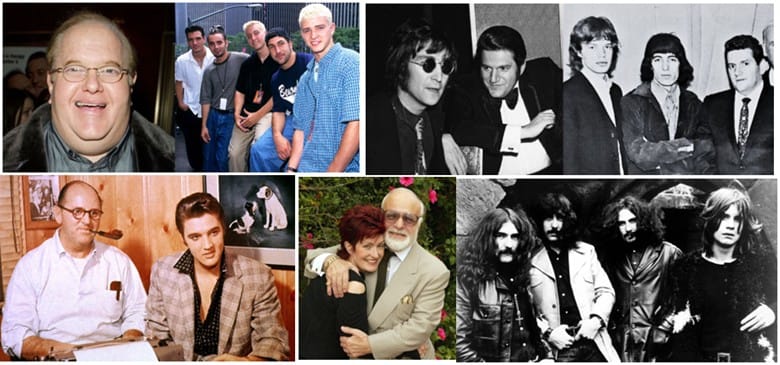Rock music is characterized by a rebellious spirit, imagination and sometimes turbulent interactions. Stories of rock bands are often defined by remarkable exits of key members – people who helped create and develop the band, many times propelling it to achieve its original success.
However, not all lasted to participate in the group’s greatest accomplishments as they were fired or left on their own volition for a myriad of reasons but many times it was due to friction with other band mates.
Peter Green and Fleetwood Mac
Peter Green is among the best songwriters and guitarists of his time. As a cofounder of Fleetwood Mac, he authored several of the band’s early hits, including “Albatross” and “Black Magic Woman.”
However, by the late 1960’s Green’s mental health deteriorated, aided by the heavy use of drugs. His struggles prompted erratic behavior and he quit the band in 1970.
Although Fleetwood Mac would end up hugely successful with an alternative sound and lineup, Green remains a pioneer in blues-rock.
Brian Jones and The Rolling Stones
Brian Jones was a founding member of The Rolling Stones and was a significant creative force during the band’s early days.
His experimental spirit lent life to songs like “Paint It Black” and “Ruby Tuesday”. However, as the 1960’s progressed, Jones’s lifestyle and substance abuse caused significant deterioration both in his abilities and relationships.
Eventually, this descent caused friction with his bandmates, and he was asked to quit the band in June 1969. Within weeks, Jones died by drowning at the age of 27.
His legacy continued as a rock icon whose contributions influenced the band’s sound.
Brian Wilson and The Beach Boys
Brian Wilson composed or co-wrote many of The Beach Boys most popular songs including the classics “Good Vibrations” and “California Girls.” However, as the band popularity grew in the early 60’s, Wilson developed mental health issues.
Anxiety and depression drove him away from live performances and recording sessions in 1964. By 1968, Wilson’s absence clearly had an effect on the leadership of the band and allowed tensions over band direction to become acute.
With little success coming from new music, younger brother took over and the band transitioned into an “oldies” act.
This proved to be very successful and profitable as it did for many of the early rock groups. Though Brian was never removed formally, and though he would return periodically by 1983, he was estranged from the group.
David Lee Roth and Van Halen
David Lee Roth had been Van Halen’s face throughout the late 1970’s and early 1980’s with his flamboyant personality and electric stage presence.
The lead singer was a co-founder of the band in 1975 and co-wrote many of their songs including their first hits, “Jump” and “Panama.”
However creative differences with guitarist Eddie Van Halen saw Roth depart in 1985. He pursued a solo career but never recovered the chemistry or success of his Van Halen years.
The band however went on to even greater success and five #1 albums with new lead singer, Sammy Hagar.
Pete Townshend and The Who
Pete Townshend was a founding member of The Who, one of the most influential rock bands of the 1960’s and 1970’s.
Serving as the band’s primary songwriter and guitarist, his leadership helped propel them to success over the eighteen years following the group’s founding in 1964.
In June of that year, during a performance at the Railway Tavern, Townshend accidentally broke the top of his guitar on the low ceiling and proceeded to destroy the entire instrument.
The on-stage destruction of instruments soon became a regular part of the Who’s live shows.
Success followed and with eleven studio albums, including the two Rock Operas, “Tommy” and Quadrophenia”, the only Who album that was written entirely by Townshend. However, all was not smooth behind the scenes. In 1975, Daltrey and Townshend disagreed about the band’s future and criticized each other via interviews in the music paper New Musical Express. Townshend felt the commitment of the group prevented him from releasing solo material.
After a 1976 tour, Townshend took a year-long break from the band to focus on spending time with his family. This was a precursor to his eventual desire to stop touring all together. Townshend wanted the Who to become a studio act; feelings that were not shared by fellow member, bassist John Entwistle; who wanted to remain a live concert attraction. The band carried on with live performances, battling through the death of drummer Keith Moon and the tragic death of 11 fans in Cincinnati, due to the “first come – first seated” format that was in place.
Townshend stepped back again from the band in the early 1980’s. He ultimately returned, though the dynamic change between him and Daltrey highlighted the tension between individual creativity and group cohesion. His personal issues with drugs also impacted that band dynamic. Townshend eventually paid for himself to be released from his recording contract and in December 1983, he announced that he was leaving the Who. His absence did not last very long as Townshend attended one off concert appearances in 1985 and rejoined the band for a 25th anniversary tour in 1989.
The stories of these musicians remind us that the path of creativity often contains trials that mold the artist and the music they leave behind. Whether asked or forced to leave, like Brian Jones, or stepping away of their own volition, like Brian Wilson and Pete Townshend, ultimately the band was forced to adapt to their departure.
The rise and fall of these legendary rock figures demonstrate just how personal struggle and creative difference can produce remarkable shifts in rock history. Each departure redefined the bands and also contributed to rock & roll, leaving legacies which resonate with fans and musicians alike.




